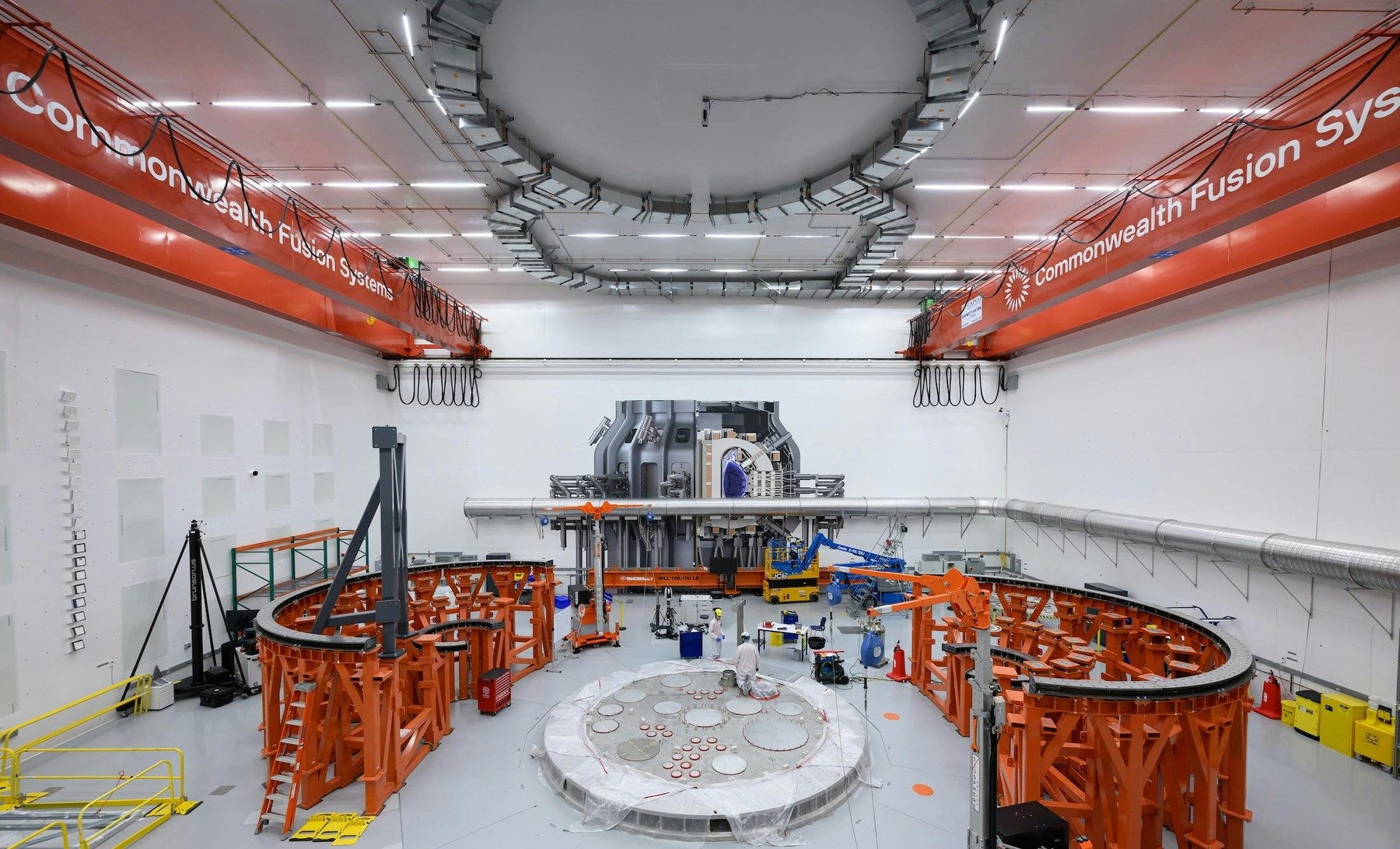Welcome to Climate Tech Pulse, your daily dose of market intelligence helping fuel the fight against climate change. From groundbreaking investments to cutting-edge research, we’re bringing you the latest in climate tech that’s shaping our future.
Don’t miss out on tomorrow’s climate solutions – subscribe now to stay ahead of the curve! https://lnkd.in/dwr7B9XJ
Today’s newsletter:

🔝Today’s Top Story: Sunly, a renewable energy company, has secured €300 million in funding from prominent European investors, including Rivage Investment, Copenhagen Infrastructure Partners (CIP), and the Norwegian pension fund KLP.
📊 Today’s Data Point: Data Insights on CO2 Storage Limits in Combating Climate Change.
🌳 Climate Insider Intelligence: Deep Dive on Climate Tech Startup Success in Africa.
Sunly Shines Bright: €300M Investment Ignites Renewable Energy Boom in the Baltics and Poland!
Image Credit: Sunly
Investment and Funding
Sunly, a renewable energy company, has secured €300 million in funding from prominent European investors, including Rivage Investment, Copenhagen Infrastructure Partners (CIP), and the Norwegian pension fund KLP. This significant investment will support the construction of 1.3 GW of solar, wind, storage, and hybrid parks across the Baltics and Poland. The funding is a major boost to Sunly’s expansion plans, enabling the company to develop new grid connections and solar parks in the region.
Renewable Energy Goals and Impact
The investment aligns with the ambitious renewable energy goals of Estonia, Latvia, Lithuania, and Poland for 2030. Sunly’s CEO, Priit Lepasepp, emphasized the impact of this funding on regional renewable energy objectives, stating that it will enable the company to participate in local renewable energy tenders and increase its contribution to meeting national renewable energy goals. Estonia’s Climate Minister, Yoko Alender, underscored the nation’s commitment to producing all electricity from renewable sources by 2030, highlighting the importance of investments in renewable energy for a sustainable and safe future.
Projects and Expansion Plans
The funding will support several flagship projects, including a 244 MW solar park in Risti, Estonia, with plans to add wind turbines and battery storage in the future. Additional projects include four solar parks in Latvia with a total capacity of 553 MW and several hybrid solar farms in Lithuania and Poland. Sunly’s expansion plans aim to develop 4.6 GW of solar and wind farms with storage technology across Poland and the Baltics by 2030, aligning with the company’s broader goal of sustainable growth and energy security in Europe. Read More
Quote of the Day
Sunly’s CEO, Priit Lepasepp, emphasized the impact of this funding on regional renewable energy objectives:
“We will use the investment for the construction of new grid connections and solar parks in the Baltics. This enables participation in local renewable energy tenders, which increase Sunly’s contribution to meeting the 2030 national renewable energy goals in the Baltics,”
Significance: Priit Lepasepp highlights the significance of the €300 million investment in enabling Sunly to participate in local renewable energy tenders, thereby increasing its contribution to meeting the 2030 national renewable energy goals in the Baltics, aligning with the region’s ambitious renewable energy targets.
Market Movers
- Polish bus manufacturer MMI has secured a €7.7 million investment from Vinci S.A. to develop a new generation of zero-emission buses, including electric and hydrogen-powered models, positioning the company as a key player in the European market. Read More
- VulcanX Energy Corp. has received $2 million from FortisBC’s Clean Growth Innovation Fund to develop a hydrogen plant utilizing its proprietary pyrolysis technology, which converts natural gas into zero-emission hydrogen and solid carbon. Read More
- Egyptian start-up TileGreen is addressing plastic waste and carbon emissions by transforming discarded plastic into building materials, such as tiles and bricks, through a process that removes 125 plastic bags per tile produced, aiming to reduce the environmental impact of the construction industry. Read More
Tech Spotlight
Adani Group’s Green Energy Initiatives
Image Credit: Adani Group
The Adani Group has demonstrated innovation through its strategic investments in renewable energy, particularly in solar and wind power, as well as its adoption of cutting-edge technologies such as artificial intelligence and blockchain to enhance operational efficiency and sustainability.
Commercial Viability
- Reducing Emissions: Adani Group is pioneering efforts to reduce emissions by co-firing a blend of coal and green ammonia at its Mundra facility, aiming to decrease India’s reliance on natural gas imports.
- Cost-Effective: The combustion point of coal and green ammonia is similar, making it a cost-effective alternative to natural gas power plants.
- Scalability: The project’s success could lead to the adoption of green ammonia in larger power plants, enhancing commercial viability.
Technical Viability
- Innovative Fuel Cell Technology: Adani Group is leveraging its expertise in green hydrogen value chains to convert carbon dioxide from its cement business into methanol.
- Carbon Capture: The company is exploring carbon capture from its cement plant, aligning with its goal of reducing emissions.
- Digital Twin Implementation: Adani Group is utilizing digital simulations to optimize the integration of green hydrogen propulsion powertrains, ensuring reliability and performance.
Environmental Viability
- Zero-Emission Aviation: Green hydrogen-powered aircraft promise significant reductions in carbon emissions, contributing to a more sustainable aviation future.
- Clean Energy Source: Adani Group’s green hydrogen technology provides a clean energy source, emitting only water vapor.
- Support for Clean Aviation Goals: The project aligns with Europe’s Clean Aviation objectives, aiming to decarbonize the aviation industry.
Scaling Potential
- Pathway to Larger Aircraft: The project’s initial focus on small aircraft is a stepping stone towards developing hydrogen propulsion systems for larger, more commercially viable aircraft.
- Industry Trends and Investment: The collaboration between major aerospace companies and research institutions highlights the growing interest in hydrogen as a viable alternative to fossil fuels in aviation.
Long-Term Implications
- Adani Group’s Leadership: The company’s participation in the project positions it at the forefront of a potential revolution in sustainable air travel.
- Commercially Viable Hydrogen-Powered Aircraft: The project’s success could lead to the development of commercially viable hydrogen-powered aircraft, contributing to the global shift towards zero-emission transportation. Read More
Policy Pulse
This section includes global updates on climate change policy, governance and regulation.
Climate Tech Leaders Unite Behind Kamala Harris, Aiming to Boost Clean Tech’s Election Influence.
A coalition of prominent climate venture capitalists and founders has rallied behind Kamala Harris, launching an initiative to raise over $5 million for her campaign and amplify clean tech’s political clout during the election season.
Why it Matters: This development is significant as it taps into the substantial political power and latent capacity of the emerging climate industrialists, who are crucial in driving the transition to a low-carbon economy. By mobilizing this community, the initiative aims to increase clean tech’s influence in the election and ultimately shape climate policy. Read More
Today’s Climate Data Point
Data Insights on CO2 Storage Limits in Combating Climate Change
Source: Imperial College London, August 29, 2024.
Recent research from Imperial College London highlights significant constraints on the rapid scaling of carbon dioxide (CO2) storage technologies, crucial for achieving global climate goals. While international scenarios envision large-scale CO2 removal, the study suggests that current growth rates may render these projections unrealistic. Here’s a breakdown of key data points from the study:
Global CO2 Removal Targets by 2050:
- Target Range: 1-30 gigatonnes per year by 2050.
- Current Feasibility: The study indicates that storing up to 16 gigatonnes annually by 2050 is possible, but only with massive investments and scaling, which are not currently anticipated.
Challenges in Scaling CO2 Storage:
- Storage Capacity Growth: The study identifies a significant gap between the required storage capacity and the current pace of development, highlighting that achieving even the lower end of the target range will be challenging without substantial increases in investment and technological advancement.
- Projected Feasibility: The analysis suggests that realistic global storage may only reach 5-6 gigatonnes per year by 2050, aligning more closely with historical growth patterns in related industries.
Regional Discrepancies in Projections:
- Overestimated Deployment Rates: The study critiques the Intergovernmental Panel on Climate Change (IPCC) models, particularly their projections for Asian countries like China, Indonesia, and South Korea, where low current development makes high future deployment rates unlikely.
- Unrealistic Assumptions: The research underscores that some IPCC models overestimate how much CO2 can be stored, leading to unreliable projections.
Path Forward for Carbon Storage:
- Realistic Goals: By applying historical data from industries like mining and renewable energy, the study proposes a more attainable benchmark for CO2 storage, offering policymakers a tool to set more realistic targets.
- Impact on Climate Policy: The findings stress the need for realistic modeling in climate policies, ensuring that targets are achievable and aligned with actual capabilities.
Key Insights:
- Limits of Current Projections: The study reveals that many existing projections for CO2 storage are overly optimistic, with significant uncertainties surrounding high-end targets.
- Importance of Realistic Planning: The research advocates for grounded, data-driven planning to ensure that carbon storage efforts can meet climate goals without relying on speculative assumptions.
This study, funded by the Engineering & Physical Sciences Research Council (EPSRC) and the Royal Academy of Engineering, underscores the critical need for more realistic assessments in the global fight against climate change. Read More
Climate Insider Intelligence: Deep Dive on Climate Tech Startup Success in Africa
Image Credit: Coinmarketcap
From the bustling streets of Lagos to the sun-soaked savannas of South Africa, Africa’s climate tech startups are on a daring mission to reshape the future. These innovators aren’t just fighting climate change—they’re transforming it into opportunities! But what’s the secret sauce behind their success? Picture this: a blend of creative financing, local power alliances, smart regulations, and cutting-edge tech. Curious to see how they’re pulling it off? Dive in, because the journey is as thrilling as the destination! Read More








